Forward
In “Unveiling the Intriguing World of Zircon Inclusions in Madagascar Sapphires,” Seangrit elucidates the enigmatic presence of zircon (ZrSiO₄) as a mineral inclusion in sapphires, particularly those emanating from metamorphic-related origins like Myanmar, Sri Lanka, or Kashmir. Coupled with the utilization of advanced spectroscopic techniques, this examination illuminates the characteristics and challenges posed by these inclusions, enhancing our understanding and adding to the allure of these captivating gemstones.
Seangrit also shares an insightful exploration of Madagascar, the world’s fourth-largest island, famed for its abundant natural resources. Particularly striking is its emergence as a major global exporter of gemstones in the 21st century, long after gold mining was established by both the French and the island’s native inhabitants.
From the distinct geological deposits to the wide variety of coveted stones they yield, including the renowned blue and pink sapphires, Madagascar’s gem landscape is as diverse as it is enchanting. Additionally, Seangrit explains the integral role played by both basaltic and metamorphic rocks in the formation of these gemstones, setting the stage for an enthralling read.
Introduction to Madagascar Sapphires.
With their stunning range of colors and brilliance, Sapphires have long held a position of importance in the gem market. Traditionally, Kashmir, Burma (Myanmar), and Sri Lanka was the primary producer of highquality sapphires (Schwarz et al., 1996), but with demand outpacing supply, the industry needed to find new sources. Enter Madagascar, a country rich in natural resources, providing the perfect environment for sapphire mining. Madagascar’s production of sapphires in a myriad of shades has rapidly emerged as an exciting player in the global gem industry.
ICA | GemLab has the unique opportunity to test the quality and identity of the sapphires we received from a client. These particular stones piqued my interest and inspired this article. As a team, we conducted extensive identification and analysis of these gems. Through of standard gemmological processes and advanced instrumentation, namely FTIR (Fourier Transform Infrared) spectroscopy. One exciting finding I discuss in depth through this analysis is the zircon inclusion, a typical feature of Madagascar’s sapphires.
Did You Know ?
Zircon is the oldest known mineral on Earth. Zircons can be found in multiple colors, from blue and pink to yellow or colorless versions. Blue zircon is typically the choice for a December birthstone.
Zircon is often confused with cubic zirconia. In reality, they are not related in any way. Cubic zirconia is a man-made gem, while zircon is a natural mineral.
The Geology of Madagascar Sapphires
The formation of sapphires in Madagascar occurs through two distinct types of host deposits: those related to basaltic and metamorphic rocks. These rocks, rich in aluminium and exposed to high temperatures and pressure, play a vital role in the genesis of sapphires. Basaltic-related deposits, prevalent in specific parts of the eastern and southern regions, are associated with granite and pegmatite rocks containing noteworthy components like biotite and feldspar. On the other hand, metamorphic host deposits are linked to limestone, marble, and sakenite (Rakotondrazafy et al.,2008). Sapphire mines in Madagascar are typically found in two types of deposits – alluvial and sedimentary, each contributing to the allure of these captivating gemstones. Alluvial deposits result from the erosion and transportation of material by rivers, leading to the deposition of sapphires in sedimentary layers. In contrast, sedimentary deposits refer to sapphires formed through the accumulation of sediments on or near the Earth’s surface
Sapphire, a captivating gemstone, belongs to the corundum family and is specifically made up of Aluminium Oxide (Al2O3). Corundum, classified within the hematite group of minerals, is renowned for forming various gemstones under both basalt-related and metamorphic geological conditions. Basalt-related blue sapphires form at great depths, believed to be in the mantle near the transition zone with the crust. These sapphires are brought up from some unknown great depths in the earth as xenocrysts within alkali basalts and associated rocks (Palke et al., 2019). Meanwhile, metamorphic sapphires originate from the solid-state recrystallization of preexisting rocks, such as marbles, gneisses, or aluminous shales, within massive, mountainous terranes composed of high-grade metamorphic rocks. These terranes are the result of cataclysmic tectonic events in which Earth’s continents collided (Saeseaw et al., 2017).

Panoramic view with rice paddy fields at Anja Community Reserve, Madagascar
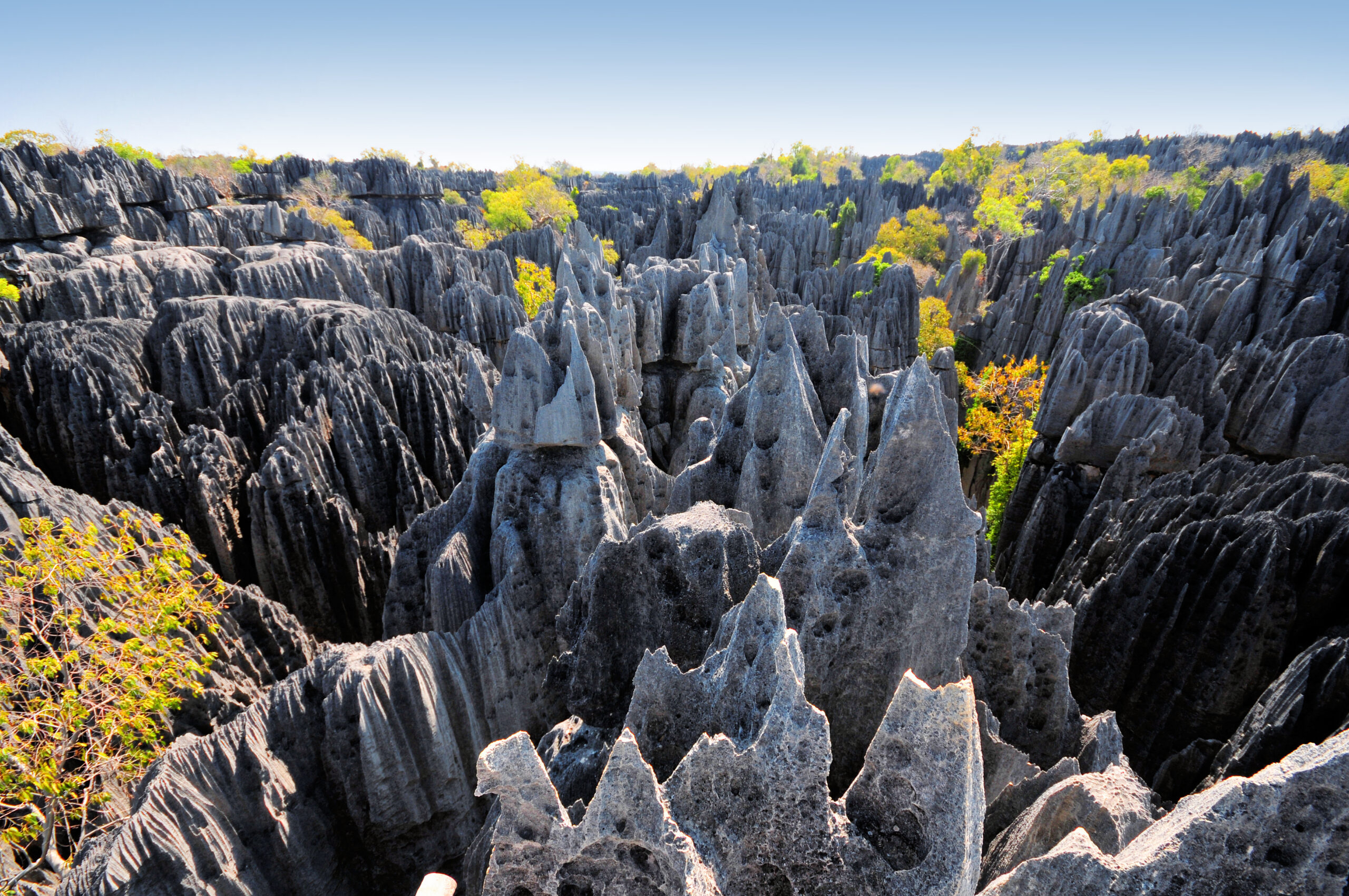
Tsingy de Bemaraha National Park, Mahajanga province, Madagascar: karst limestone formation - Stone Forest - UNESCO World Heritage Site - photo by M.Torres
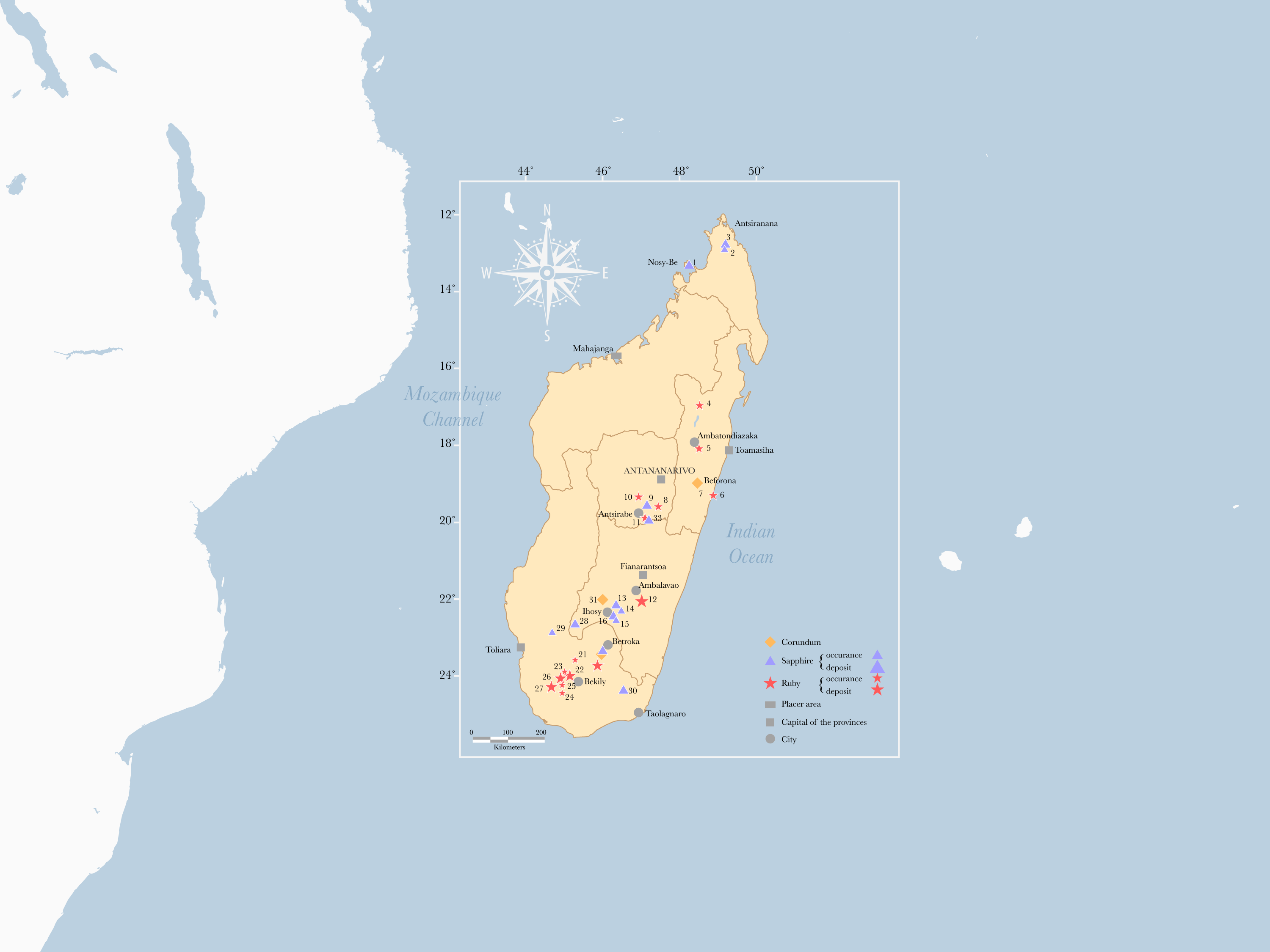
Figure 4
Madagascar corundum deposit map (Rakotondrazafy et al., 2008
Madagascar, known as the world’s fourth-largest island, is an island country lying off the southeastern coast of Africa. Madagascar has abundant natural resources, including diverse wildlife, gold, minerals, and gemstones. This wealth can be traced back approximately 750-500 million years when Madagascar was part of the Gondwana supercontinent, nestled between what is now East Africa, southern India, and Sri Lanka. Today, this region, known as the Mozambique (Pan-African) Orogenic Belt, is one of the world’s richest deposits of corundum (Hughes & Perkins, 2019). Interestingly, gold mining was discovered by the French and the island’s native inhabitants long before the emergence of precious gemstones in the 21st century. Presently, Madagascar has become a prominent global exporter of gemstones, boasting numerous mines that yield a wide variety of coveted stones, including sapphire, ruby, emerald, zircon, tourmaline, quartz, garnet, and labradorite.
In Madagascar, significant corundum deposits are found in the southern region, specifically in areas such as Ilakaka, Ranotsara Ava, Andalatanosy, and Ihosy. Meanwhile, the eastern part of the country, with locations like Antsirabe, Ambatolampy, Mahanoro, and Fianarantsoa, has been known for remarkable discoveries of tourmaline, sapphire, and ruby. Among these gemstones, Madagascar’s sapphires have garnered well-deserved renown. Blue sapphires from Andranondambo and pink and fancy sapphires from Ilakaka are particularly valued in the market.
Zircon inclusions background
Zircon (ZrSiO₄) is commonly found as a mineral inclusion within Madagascar’s sapphires, especially those sourced from metamorphic related origins such as Myanmar, Sri Lanka, or Kashmir. These zircon inclusions exhibit distinct characteristics, appearing as small, round, or irregular colorless crystals that occur in both clusters of crystals or single orphaned crystals isolated crystal. Some of the crystals in these sapphires exhibit tension cracks, presenting a unique challenge for gemologists (Figures1). These cracks make it difficult to determine the heat treatment of the sapphires and whether they have undergone Low Temperature Heat Treatment, a process heated below 700°C that often leaves inclusions unaffected. This requires advanced instruments for detection. To assist with their analysis, gemologists often turn to FTIR (Fourier Transform Infrared) spectroscopy. They specifically examine OH-related feature peaks at 3309 and 3232 cm -1, utilizing these as supporting evidence for the potential low-temperature heat treatment of corundum. This technique builds upon the previous studies on this subject (Sripoonjan et al., 2018; Saeseaw et al., 2020). The OH-related feature, also known as the hydroxyl bond, represents a mode of water in corundum (Hughes et al., 2017). This feature, associated with titaniumhydroxyl defects, disappears when heated (Hennebois et al., 2023).
Recently, Raman spectroscopy has emerged as a valuable tool for investigating the properties of these inclusions, with researchers identifying specific peaks at frequencies of 202, 216, 224, 365, 445, 975, and 1016 cm-1 (Wang et al., 2006; Xu & Krzemnick, 2021). During the process of gemological analysis of these sapphires, I found and can confirm these findings to be true.
These significant findings have contributed to the creation of an extensive database at ICA | GemLab, enabling accurate identification of unknown crystals resembling zircon inclusions.
Figures 1 : A-H: This series of images presents various types of inclusions observed in Pink Sapphires
from Madagascar, both unheated and heated Photo by Chanikarn S.
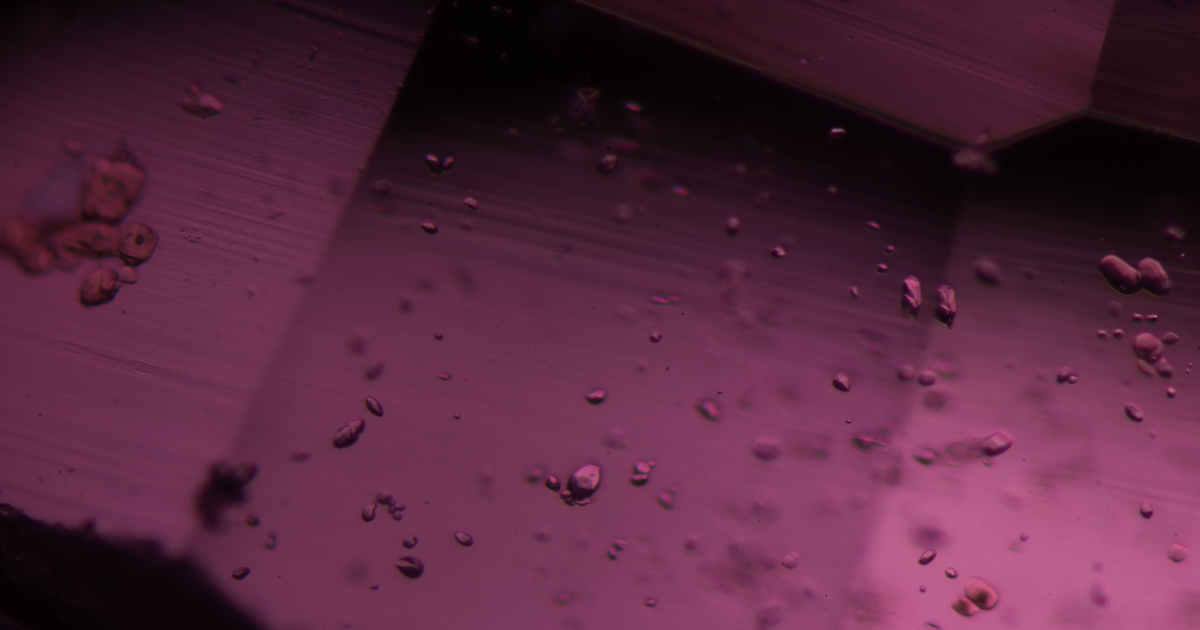
A
Innumerable tiny transparent crystals or zircon inclusion with yellow transparent crystals in
unheated sapphire.

B
Cluster of zircon inclusion some with tension cracks that like discoid fractures that develop around
crystals after heat treatment in unheated pink sapphire

C
Unaltered zircon inclusion with tension crack in unheated pink sapphire.
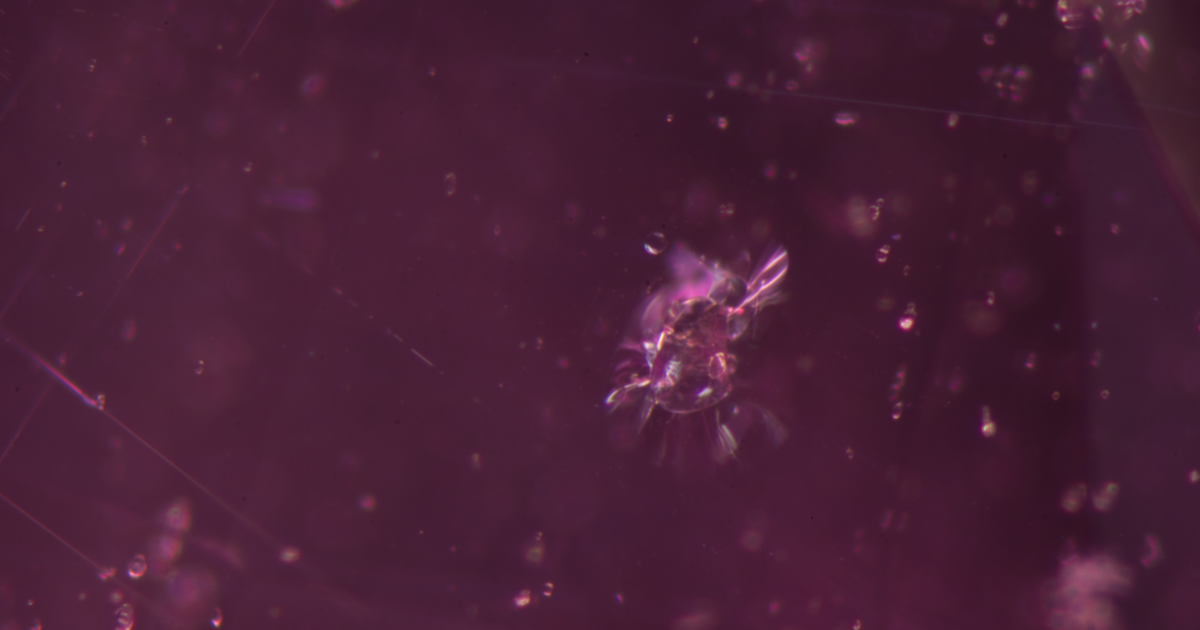
D
Transparent crystal with tension crack with innumerable tiny transparent crystals (zircon inclusion) and undissolved silks with thin film in unheated sapphire.
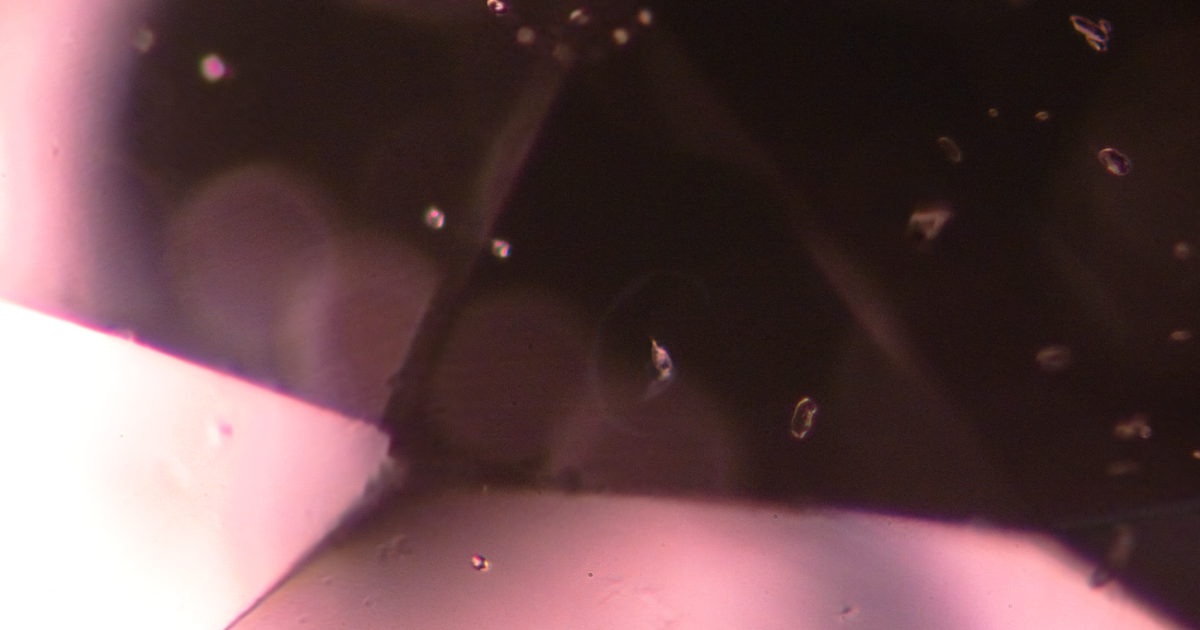
E
Zircon inclusion with weak frosted tension crack that is a low temperature heated in pink sapphire.
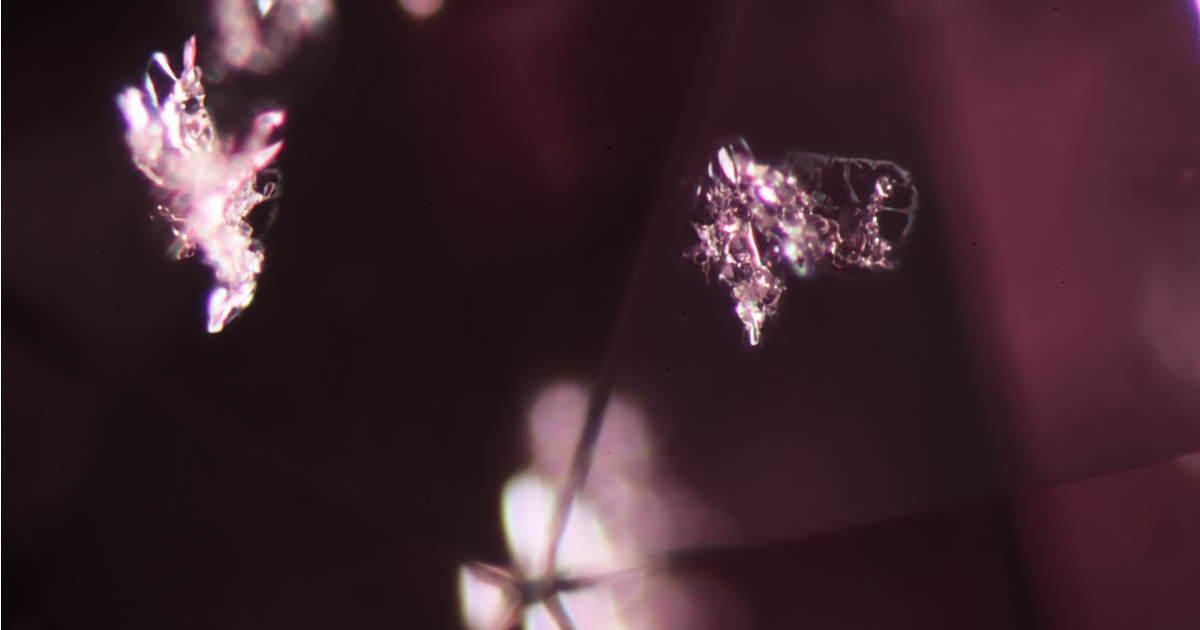
F
Cluster of zircon inclusion are transparent crystals but tension around crystals look be frosted in a
low temperature heated sapphire.

G
Innumerable transparent crystals with zircon inclusion look to be altered in low temperature
heated sapphire.
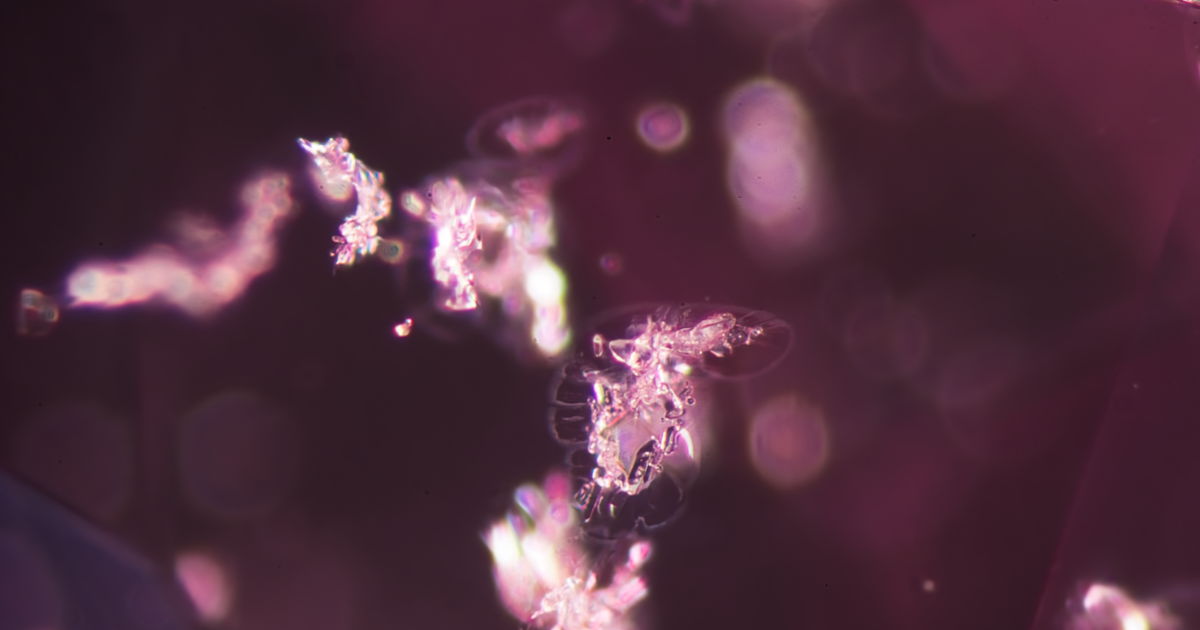
H
Transparent zircon inclusions are present in this low-temperature heated sapphire, some of which
exhibit frosted tension cracks, also referred to as ‘halos’ by some researchers.
FTIR spectra examples of Madagascar sapphires, comparing unheated samples against those that underwent both low-temperature and high-temperature heat treatments. As illustrated in Figure 2:
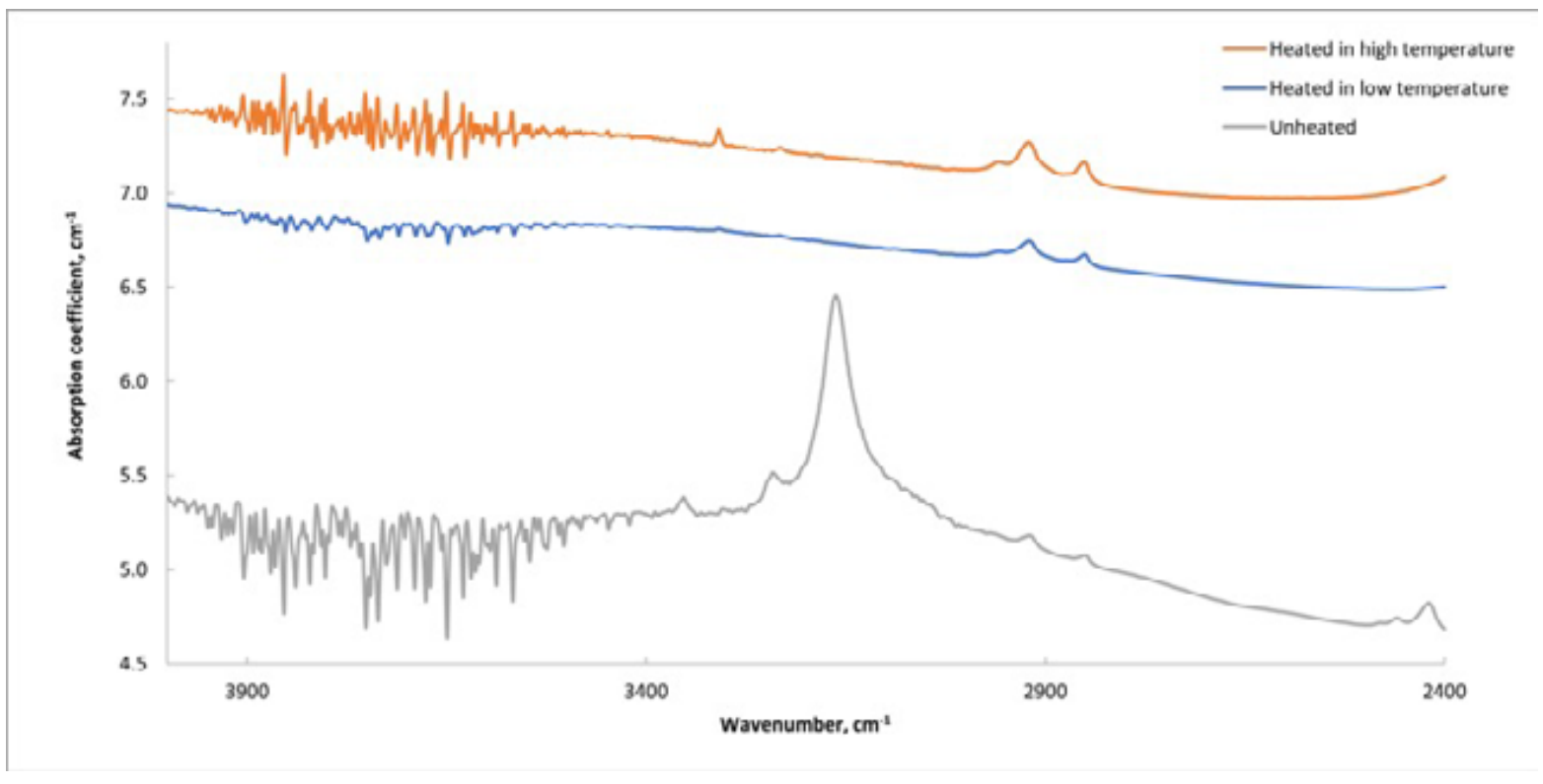
Figure 2
The comparing FTIR spectra from Low temperature heat treatment, High temperature heat treatment and unheated Madagascar sapphire.
– The grey line, representing an unheated Madagascar sapphire, reveals peaks in the 3161 series
specifically at 3161, 3240, and 3355 cm-1. These peaks are typically observed in natural yellow, padparadscha, blue, and pink sapphires (Choudhary & Vijay, 2018).
– The orange line, indicative of high-temperature heat treatment, prominently displays peaks of the OH group at 3309 and 3232 cm-1.
– The blue line, representing low-temperature heat treatment, very weak peaks at 3309 and 3232 cm-1.”
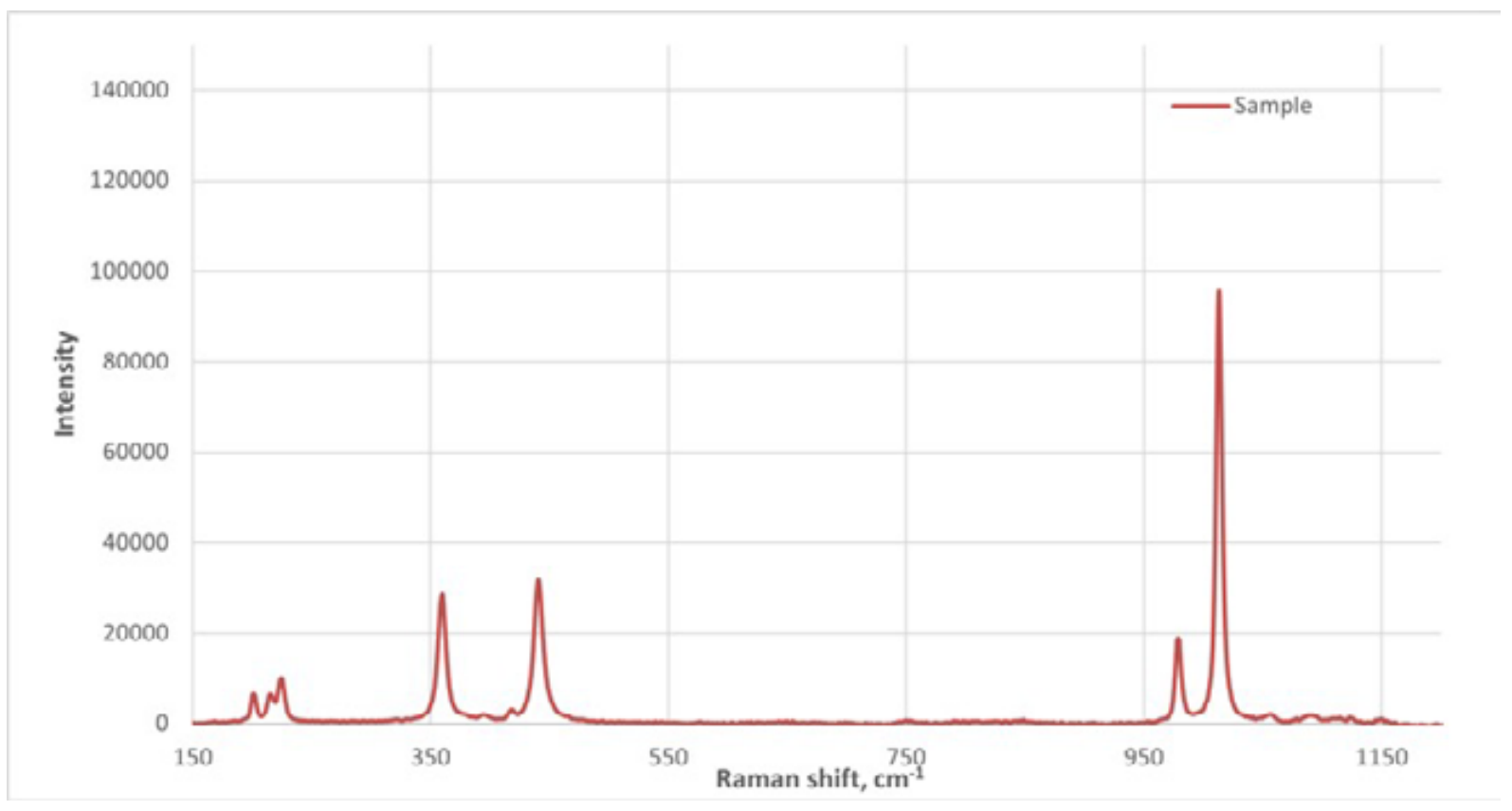
Figure 3
Raman spectra from a pink sapphire sample from Madagascar. The spectra identify specific peaks at frequencies of 202, 216, 224, 365, 445, 975, and 1016 cm-1, consistent with previous studies (Wang et al., 2006). These results demonstrate the presence of zircon inclusions in the sample.
Conclusion
In conclusion, the presence of zircon inclusions within Madagascar’s sapphires introduces a captivating world of gemological exploration. The application of advanced spectroscopic techniques, such as FTIR and Raman spectroscopy, has paved the way for a deeper understanding of these inclusions and their properties. With its remarkable gemstones and abundant natural resources, Madagascar holds a prominent position in the global gemstone trade. Among these treasures, sapphires shine particularly brightly, captivating traders and enthusiasts worldwide. The ongoing quest to accurately determine their origin fuels the passion of gemologists and continues to contribute to our understanding of sapphires from this region.
Closing Thoughts
In recent years, sapphire deposits have been discovered in numerous locations worldwide. However, demand for sapphires in the gems and jewelry industry consistently exceeds the available supply, contributing to their high value in the market. Determining a sapphire’s origin is paramount for gem traders as it significantly influences pricing. The diverse sources of sapphires present a challenge for gemological laboratories tasked with accurately identifying their geographical origins. Accurate origin determination not only impacts the value of these gemstones but also offers insights into their fascinating geological journeys, further enhancing their allure and desirability in the market.
References
1. Choudhary, G., & Vijay, S. (2018). 3161cm-1 Infra-Red Feature in Synthetic Sapphires. GIA International
Gemological Symposium 2018, 1-2.
2. Hennebois, U., Delaunay, A., & Karampelas, S. (2023). Heated Purplish Pink Sapphire from Ilakaka (Madagascar) with Colored Monazite Inclusions. Gems & Gemology, 59(2), 159-160.
3. Hughes, R. W., Manorotkul, W., & Hughes, B. E. (2017). Ruby & Sapphire: A Gemologist’s Guide. Bangkok:
Lotus Gemology.
4. Hughes, B. E., & Perkins, R. (2019). Madagascar Sapphire: Low-Temperature Heat Treatment Experiments.
Gems & Gemology, 55(2), 184-197.
5. Khowpong, C. (2018). Zircon Cluster in Ethiopian Sapphire. Gems & Gemology, 54(4), 450-451.
6. Palke, A. C., Saeseaw, S., Renfro, N. D., Sun, L., & McClure, S. F. (2019). GeographicOrigin Determination
of Blue Sapphire. Gems & Gemology, 55(4), 536-579.
7. Rakotondrazafy, A. F. M., Giuliani, G., Ohnenstetter, D., Fallick, A. E., Rakotosamizanany, S., Andriamamonjy, A., Ralantoarison, T., Razanatseheno, M., Offant, Y., Garnier, V., Maluski, H., Dunaigre, C., Schwarz, D.,
& Ratrimo, V. (2008). Gem corundum deposits of Madagascar: A review. Ore Geology Reviews, 134–154.
8. Saeseaw, S., Sangsawong, S., Vertriest, W., & Atikarnsakul, U. (2017). An In-Depth Study Of Blue Sapphires
From Pailin, Cambodia. News From Research GIA, 1–41.
9. Saeseaw, S., Sangsawong, S., Vertriest, W., Atikarnsakul, U., Liliane, V., Raynaud-Flattot, V. L., Atikarnsakul,
U., Khowpong, C., & Weeramonkhonlert, V. (2017). A Study of Sapphire from Chanthaburi, Thailand and Its
Gemological Characteristics. News From Research GIA, 1–41.
10. Saeseaw, S., Khowpong, C., & Vertriest, W. (2020). Low-temperature Heat Treatment of Pink Sapphires From
Ilakaka, Madagascar. Gems & Gemology, 56(4), 448-457.
11. Schwarz, D., Petsch, E. J., & Kani, J. (1996). Sapphires from Andranondambo Region Madagascar. Gems &
Gemology, 32(2), 80-99.
12. Sripoonjan, T., Wanthanachaisaeng, B., & Leelawatanasuk, T. (2016). Phase Transformation of Epigenetic
Iron Staining: Indication of Low-Temperature Heat Treatment in Mozambique Ruby. The Journal of Gemmology, 35(2), 156-161.
13. Wang, W., Scarratt, K., Emmett, J.L., Breeding, C.M., & Douthit, T.R. (2006). The Effects of Heat Treatment
on Zircon Inclusions in Madagascar Sapphires. Gems & Gemology, 42(2), 134-150.
14. Xu, W., & Krzemnick, M. S. (2021). Raman spectroscopic investigation of zircon in gem-quality sapphire:
Application in origin determination. Journal of Raman Spectroscopy, 1-11.
About the Writer

Chanikarn Seangrit
Gemologist at ICA| GemLab known for her expertise in analyzing gemological data and using both basic and advanced gemological instruments. She excels at identifying and certifying gemstones, determining their type, origin, treatment, and clarity grading under a microscope including color grading.

